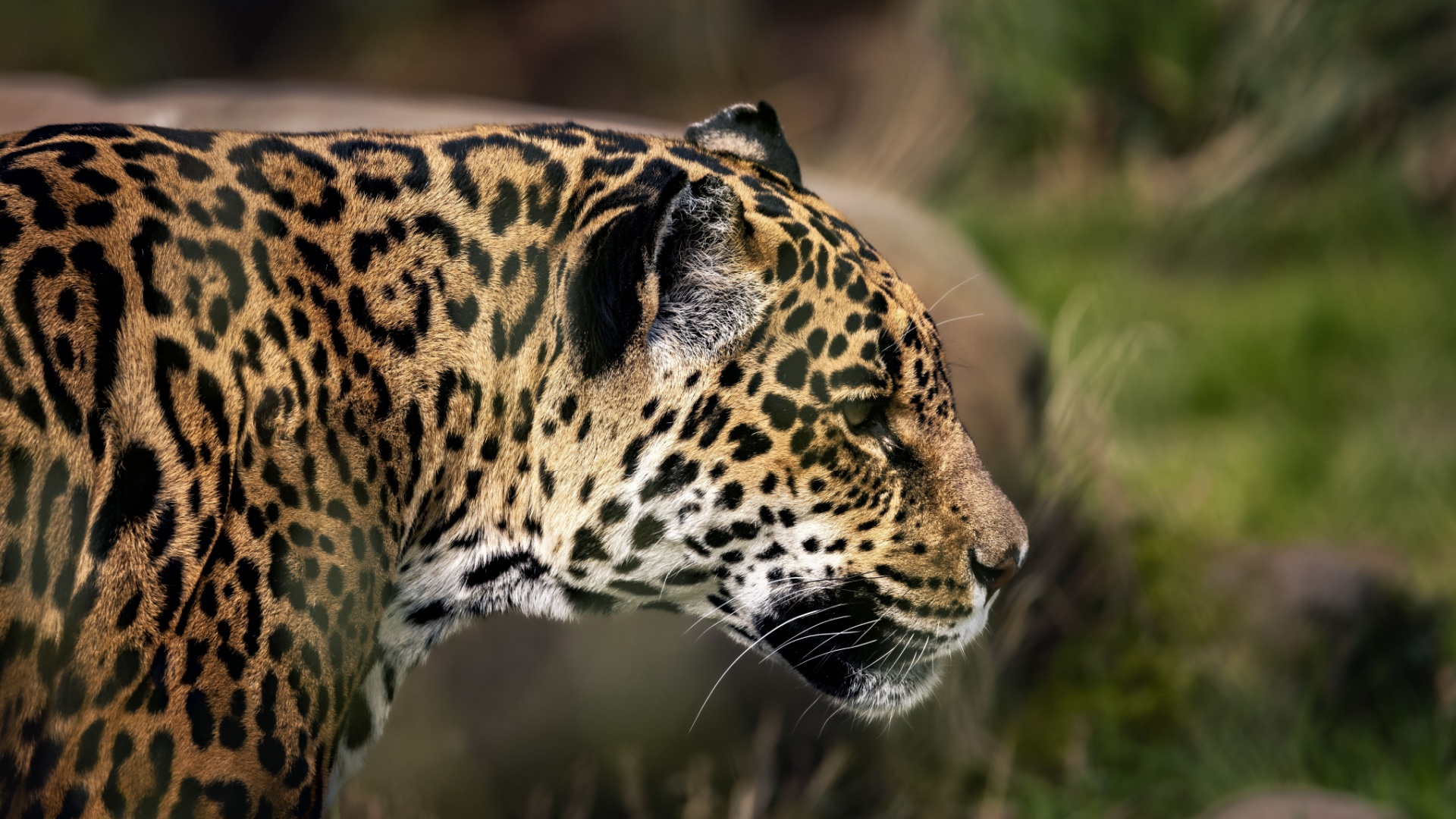Jaguars are powerful predators and one of the most iconic big cats in the world. Known for their strength, agility, and striking spotted coats, these majestic creatures are masters of their jungle and savanna habitats.
From their unique hunting techniques to their cultural significance, jaguars are as fascinating as they are fierce. Dive into the world of jaguars and uncover the incredible traits that make them one of nature’s most awe-inspiring animals.
1. The Mighty Bite
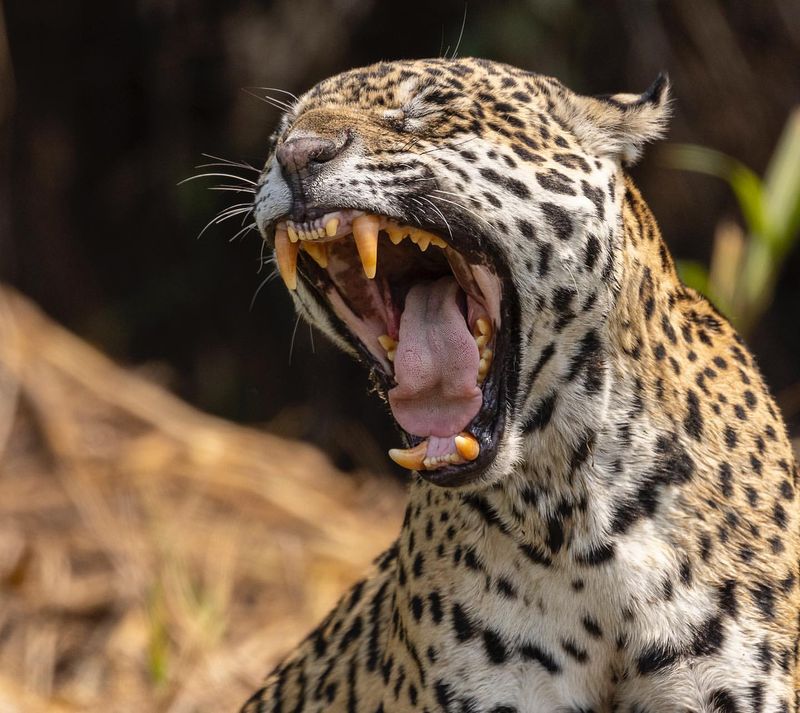
Jaguars are renowned for their extraordinarily powerful bite, which is the most forceful of any big cat, relative to their size. This incredible strength allows them to pierce through the skulls or shells of their prey effortlessly.
For instance, unlike lions or tigers who generally go for the throat, jaguars often choose to crush the skull of their prey, delivering a swift and fatal bite. This unique hunting technique sets them apart in the feline world. The jaguar’s bite is so powerful, it allows them to prey on armored reptiles like turtles and caimans, showcasing their adaptability and diverse diet.
These cats have evolved with such formidable biting power as an evolutionary advantage, helping them hunt efficiently in their habitat, which includes dense forests and flooded wetlands. Understanding the mechanics and strength of a jaguar’s bite gives us insight into the evolutionary adaptations that have allowed them to thrive in their ecosystems for thousands of years.
Truly, the jaguar’s bite is a testament to its prowess as a predator.
2. Camouflage Mastery
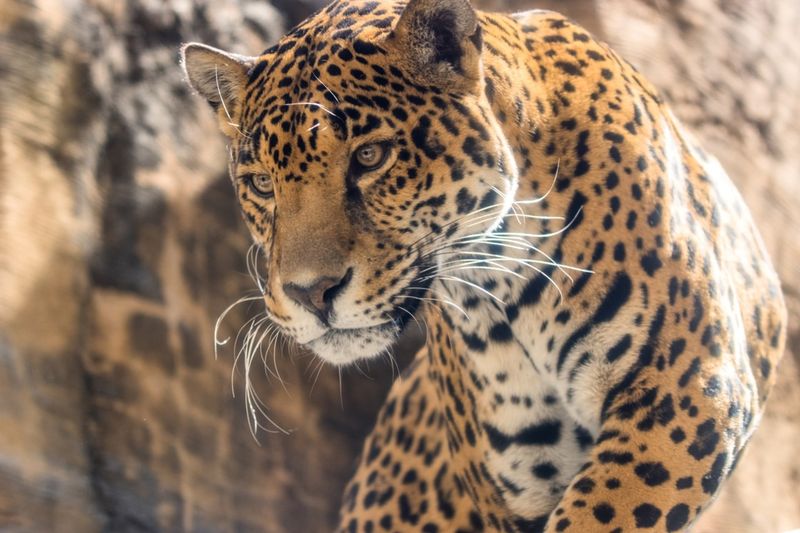
Jaguars possess a coat pattern that serves as a masterful form of camouflage in their natural habitat. The rosettes and spots on their fur are not just for show; they are a critical adaptation for survival. This pattern helps them seamlessly blend into the dappled light of the forest floor, making them nearly invisible to both prey and potential threats.
The jaguar’s spots mimic the play of sunlight and shadow, creating an optical illusion that makes it difficult for other animals to spot them. This camouflage is especially effective in the dense, leafy environments of the Amazon, where light filters through the canopy in scattered patches. Their stealthy appearance aids in their ambush hunting style, allowing them to get as close to their prey as possible before launching an attack.
The beauty of their coat is not only a feast for the eyes but also a fascinating example of nature’s ingenuity in equipping animals with the tools needed for survival. With such adaptive features, jaguars showcase the brilliance of evolutionary design.
3. Territorial Solitude
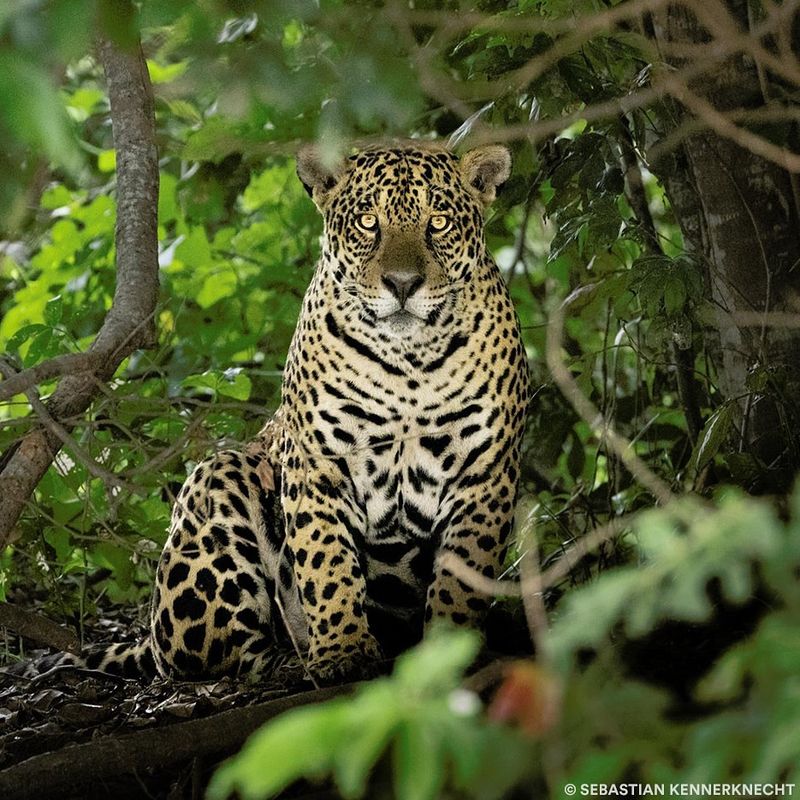
They are known for their territorial nature and preference for living alone. Unlike some big cats that may form loose social structures, jaguars are solitary by nature, marking and maintaining territory that can span several square miles. This territorial behavior is a critical aspect of their lifestyle, ensuring they have access to ample prey and resources.
Jaguars communicate their presence through vocalizations known as ‘roars,’ and by marking trees with their claws or scent. They are known to fiercely defend their territory from other jaguars, especially those of the same sex. The solitary nature of jaguars is not just a behavioral trait but also a survival strategy, reducing competition for food and mates.
This independence allows jaguars to roam freely in search of prey, ensuring they remain at the top of the food chain in their respective environments. Understanding this aspect of their life gives us a glimpse into their complex social behaviors and their need for vast, undisturbed habitats to thrive.
4. Jungle Giants
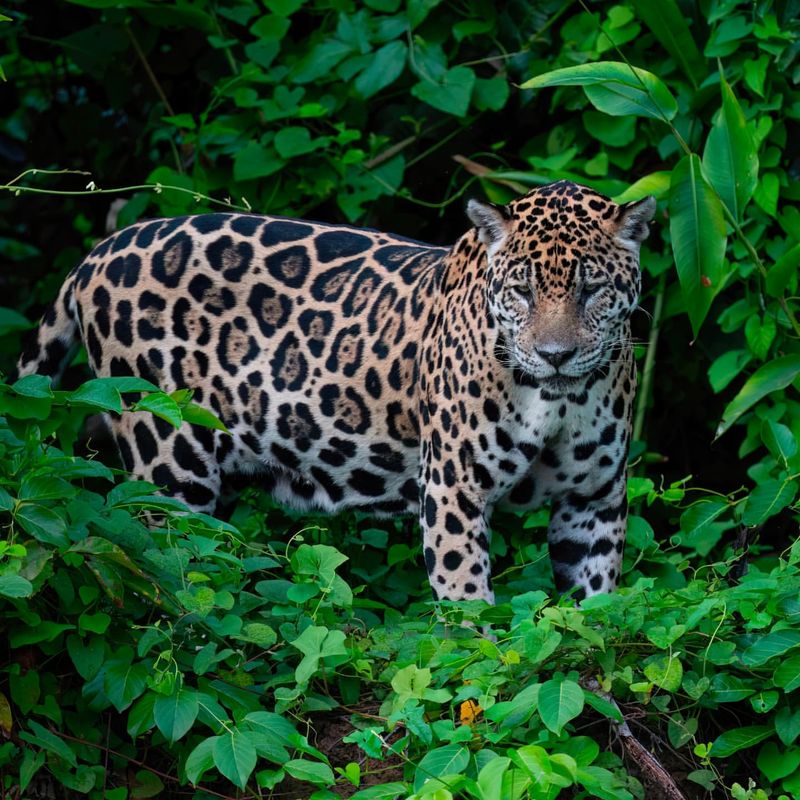
Among the big cats, jaguars are notable for their impressive size and strength. They are the largest cats in the Americas and the third-largest in the world, following tigers and lions. Jaguars are incredibly muscular, with males weighing between 100 to 250 pounds, while females are slightly smaller. This robust build allows them to overpower prey that is much larger than themselves, demonstrating their prowess as top predators.
The jaguar’s size and strength are adaptations that enable them to thrive in their diverse habitats, from rainforests to grasslands. Their muscular frame is complemented by powerful limbs, used for climbing, swimming, and pouncing on prey. Jaguars are also adept swimmers, often hunting in and around water bodies.
Their impressive physique and adaptability underscore their role as apex predators, capable of shaping the ecosystems they inhabit. These jungle giants are not just symbols of might but also keystone species, whose presence is crucial for maintaining the balance within their environment.
5. Silent Stalkers
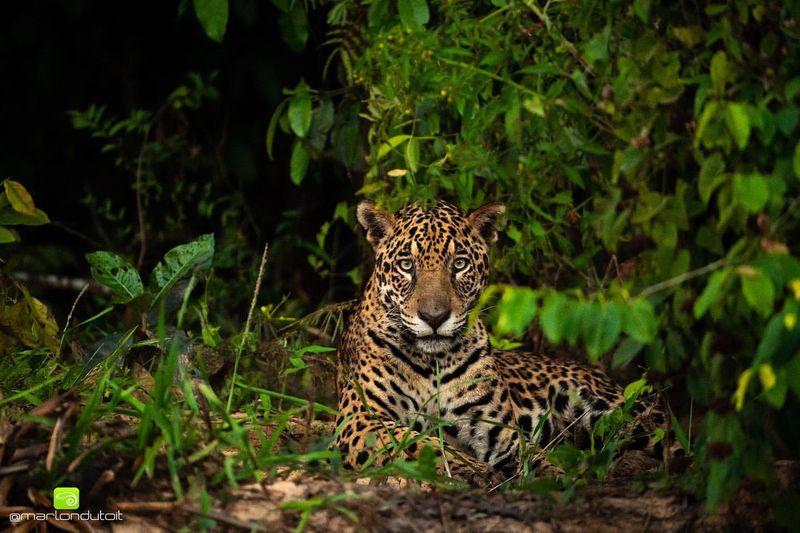
Jaguars are renowned for their stealth and ability to move undetected through the dense jungles they call home. Their padded feet allow them to tread softly, making minimal noise as they approach their prey. This silent stalking is a key hunting strategy, enabling them to surprise their prey with sudden, explosive attacks.
The jaguar’s exceptional hearing and acute vision further enhance their ability to detect and track prey, even in low-light conditions. These adaptations make them formidable nocturnal hunters, often preying on deer, peccaries, and other mammals. Jaguars are also known for their patience, sometimes watching their prey for hours before making a move. This calculated approach, combined with their stealth, makes them one of the most efficient predators in the animal kingdom.
Their ability to remain unseen until the last moment is a testament to their evolutionary success, allowing them to thrive in some of the most challenging environments on Earth. By understanding their hunting techniques, we gain insight into the natural balance of predator and prey dynamics in their habitat.
6. Aquatic Aficionados
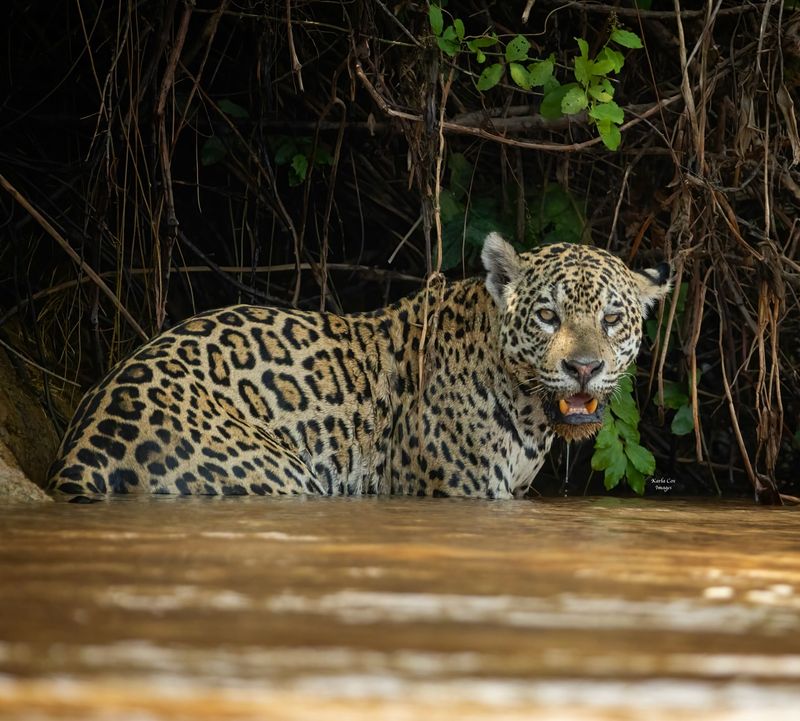
Unlike most big cats, jaguars have a unique affinity for water, which plays a significant role in their hunting repertoire. They are excellent swimmers, often found in and around rivers, lakes, and wetlands within their territory. This affinity for water enables them to hunt a variety of aquatic prey, including fish, turtles, and caimans.
Jaguars have been observed leaping into the water to catch unsuspecting prey, demonstrating their agility and adaptability. Their powerful limbs and webbed paws aid in swimming, allowing them to maneuver easily in aquatic environments. This skill not only expands their hunting grounds but also provides a competitive advantage over other predators in their ecosystem.
Their connection to water is not just for hunting; it also helps them cool off in the hot, humid climates they inhabit. The jaguar’s ability to thrive in water-rich environments highlights their versatile nature and adaptability.
As we explore their aquatic habits, we uncover yet another remarkable facet of these majestic creatures, further solidifying their reputation as one of nature’s most adaptable predators.
7. Mysterious Melanism
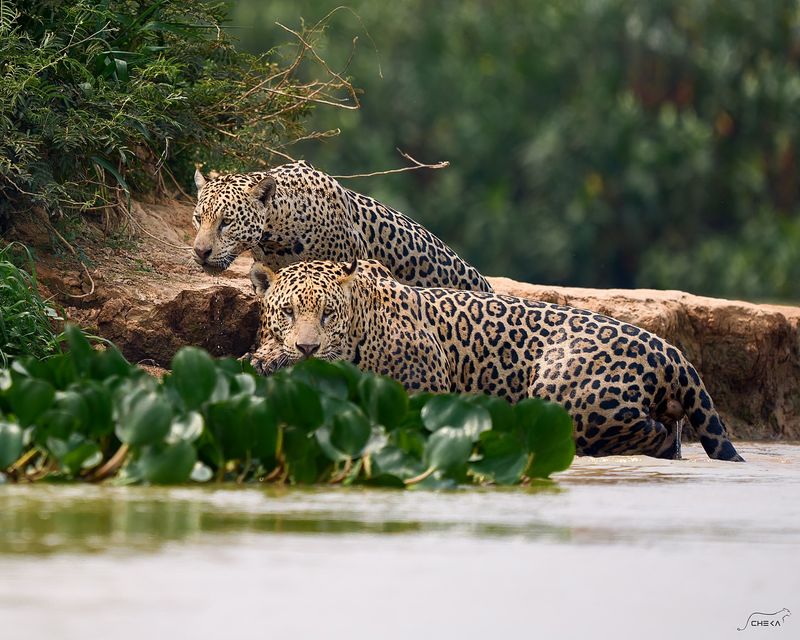
Melanism, a genetic variation that results in a black or dark-colored coat, is a fascinating trait observed in jaguars. Often referred to as “black panthers,” melanistic jaguars are not a separate species but a variant of the jaguar with an abundance of dark pigmentation.
This unique appearance is the result of a natural mutation, which some scientists believe offers advantages such as enhanced camouflage in shadowy forest environments. The dark coat can help melanistic jaguars blend seamlessly into the jungle shadows, providing an edge in stealth and surprise when hunting.
While melanism is more commonly associated with leopards, it is equally present in jaguars, particularly in dense rainforest habitats. These elusive creatures add an element of mystery to the jaguar family, their presence often going unnoticed due to their ability to vanish into the darkness.
Observing a melanistic jaguar is a rare and thrilling experience, offering a glimpse into the complex genetic diversity of the animal kingdom. Through the study of melanistic jaguars, researchers continue to learn about the evolutionary benefits and occurrence of this striking trait.
8. Cultural Icons
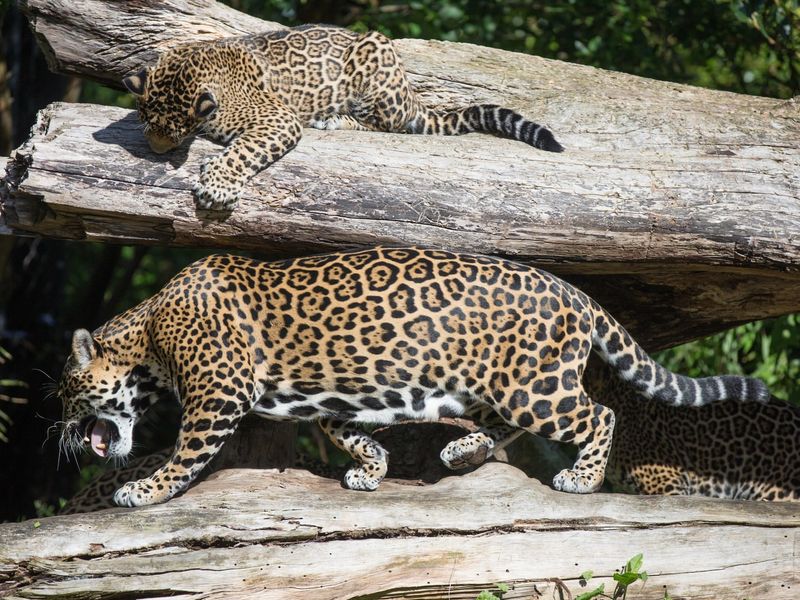
Throughout history, jaguars have held a place of reverence and mystique in various cultures, particularly among indigenous peoples of the Americas. In Aztec and Mayan mythology, the jaguar is often seen as a symbol of power, strength, and the spiritual world.
These cultures revered the jaguar as a protector and a revered creature, often featuring it prominently in their art and architecture. Jaguars were believed to possess the ability to move between the earthly and spiritual realms, acting as mediators and guardians. This symbolic significance is evident in the numerous jaguar-inspired artifacts and ceremonial masks that have been uncovered by archaeologists.
Even in contemporary times, the jaguar continues to be a powerful symbol in many indigenous communities, representing resilience and a deep connection to the natural world. The cultural importance of jaguars highlights their impact beyond the ecological, influencing human art, mythology, and spirituality for centuries.
By understanding these cultural connections, we gain a deeper appreciation for the jaguar’s role not only in nature but also in the rich tapestry of human history.
9. Clever Communicators
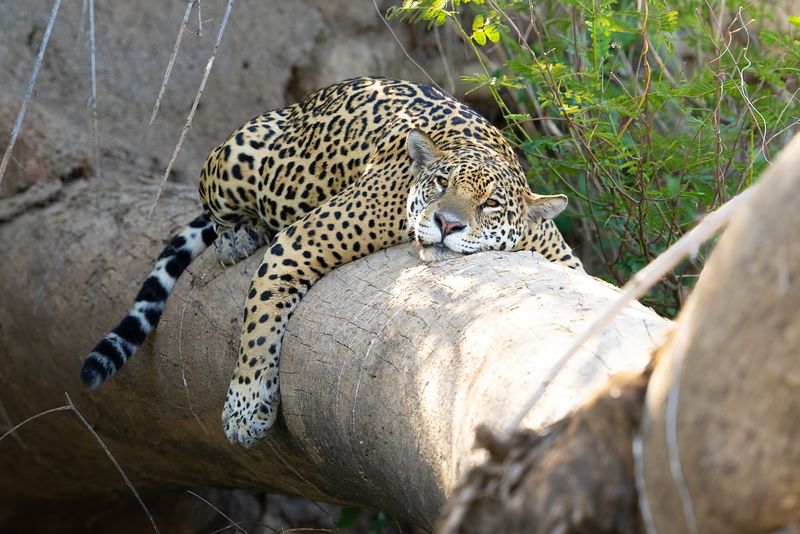
While solitary, jaguars possess a complex system of communication to interact with each other, primarily focusing on vocalizations, scent markings, and visual signals. They are known for their distinctive roars, which can be heard up to two miles away, serving as a means to mark territory and ward off intruders. This vocal prowess is essential for maintaining their solitary lifestyle, signaling presence without the need for direct contact.
In addition to roaring, jaguars use scent markings by rubbing their bodies against trees or leaving scratch marks, creating a chemical and visual boundary for other jaguars. These markings convey vital information such as identity, reproductive status, and territorial boundaries. Visual signals, such as body postures and facial expressions, also play a role in jaguar communication, although these are less frequently observed given their solitary nature.
Understanding the intricacies of jaguar communication provides valuable insights into their behavior and social interactions, revealing a side of these majestic creatures that goes beyond their prowess as hunters and solitary wanderers. These clever communicators remind us of the importance of understanding animal behavior in preserving wildlife.
10. Diverse Diet
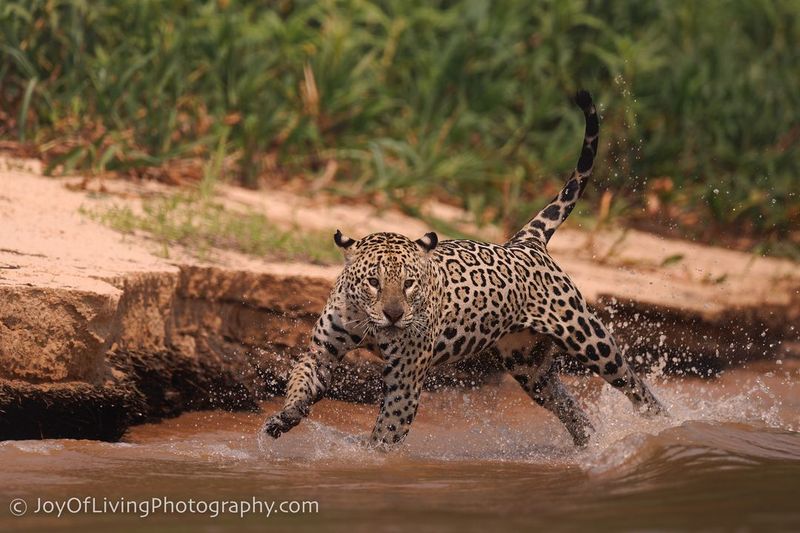
Jaguars are opportunistic feeders, known for their diverse diet that includes a wide range of terrestrial and aquatic prey. Unlike some big cats that specialize in specific prey, jaguars are highly adaptable hunters, capable of taking down over 85 different animal species.
This dietary flexibility is a key factor in their survival across diverse habitats, from dense jungles to flooded wetlands. Jaguars have been known to prey on deer, peccaries, capybaras, and even caimans and turtles, using their powerful jaws to penetrate tough hides and shells. Their preference for a varied diet is not only a testament to their adaptability but also a reflection of their role as apex predators, helping to regulate prey populations and maintain ecological balance.
This diverse diet also enables jaguars to thrive in environments where food resources may fluctuate, showcasing their resilience and ability to exploit different ecological niches. As we explore the dietary habits of jaguars, we gain a deeper understanding of their ecological impact and the intricate web of life they help sustain in their natural habitats.
11. Historical Habitat Range
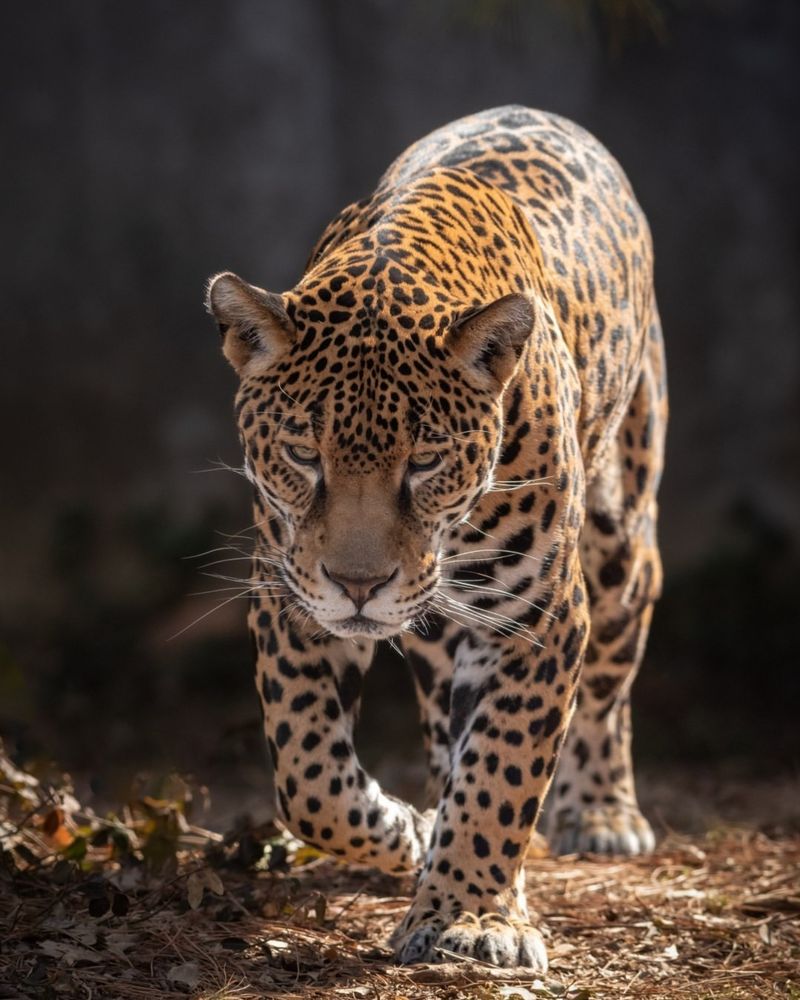
Historically, jaguars roamed vast territories across the Americas, from the southern United States to the northern regions of Argentina. Their range once included diverse ecosystems such as tropical rainforests, grasslands, and even arid scrublands. This extensive range underscores the jaguar’s adaptability and ability to thrive in varied environments.
However, over the past century, their habitat has drastically decreased due to human activities such as deforestation, agriculture, and urbanization. The loss of habitat has not only reduced their population but also fragmented their territories, isolating them and making genetic diversity a concern.
Conservation efforts are now focused on creating wildlife corridors that connect fragmented habitats, allowing jaguars to roam and breed, thus ensuring their survival. Understanding the historical range of jaguars provides a glimpse into their adaptability and highlights the importance of preserving natural habitats to maintain biodiversity.
As apex predators, their presence is vital for the health of ecosystems, and protecting their habitats is crucial for the conservation of the rich biodiversity they help sustain.
12. Conservation Challenges
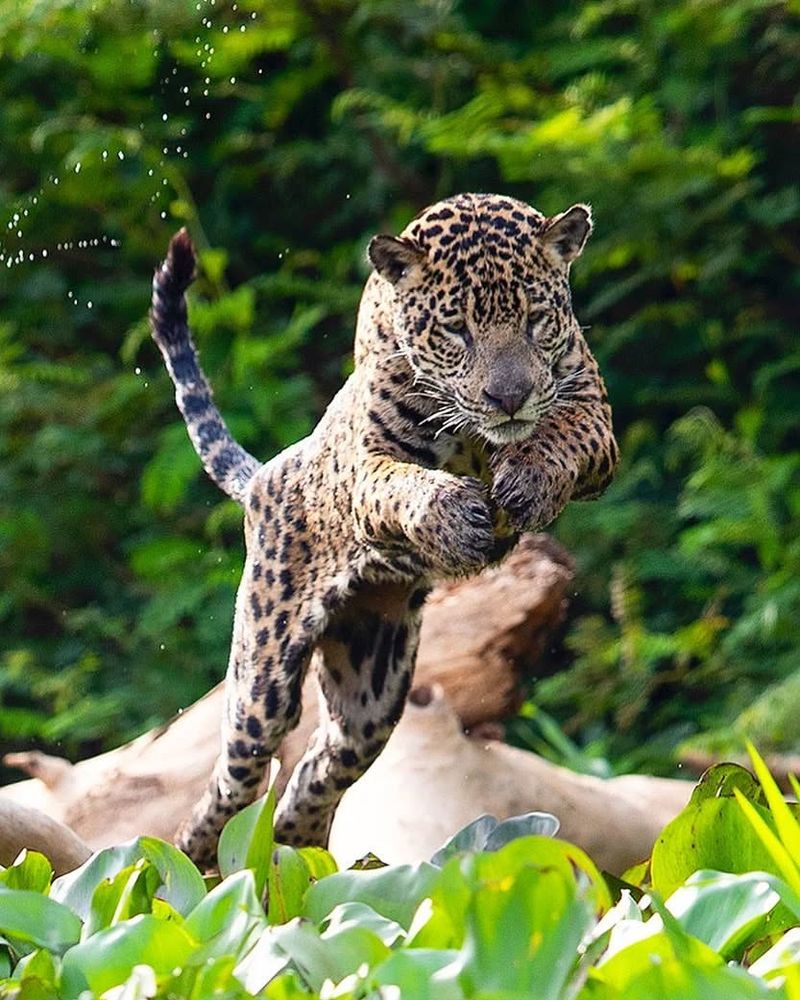
Despite being one of the most iconic big cats, jaguars face numerous conservation challenges that threaten their survival. Habitat loss is the primary threat, driven by deforestation, agriculture, and the expansion of human settlements. As their natural habitats shrink, jaguars are increasingly coming into conflict with humans, leading to retaliatory killings and poaching.
These challenges are compounded by illegal wildlife trade, where jaguar parts are sought for traditional medicine and ornamentation. Conservationists are working tirelessly to mitigate these threats through habitat restoration, anti-poaching efforts, and community engagement programs aimed at promoting coexistence. Establishing protected areas and wildlife corridors is crucial for providing jaguars with the space they need to move and reproduce.
Public awareness and education campaigns are also essential for changing perceptions and reducing human-wildlife conflict. The plight of the jaguar is a poignant reminder of the delicate balance between human progress and wildlife conservation.
13. Reproductive Rituals
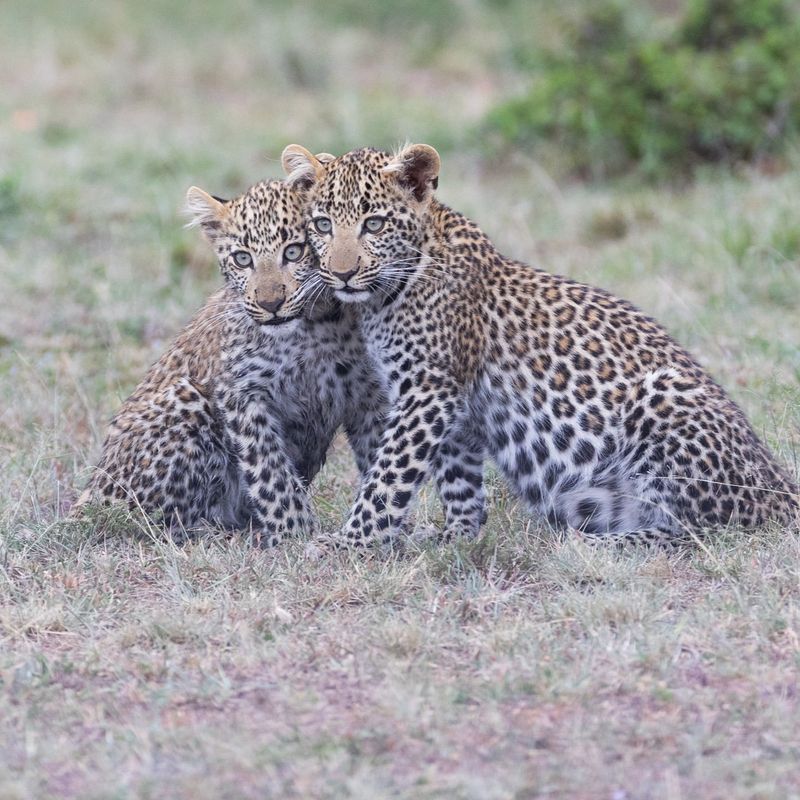
The reproductive behaviors of jaguars are as fascinating as the animals themselves. Jaguars reach sexual maturity at around two to three years of age, and reproduction is a solitary affair, with individuals coming together only for mating.
The courtship rituals involve vocalizations, scent marking, and displays of strength, with males often competing for access to females. Once a pair has mated, the female will carry her cubs for about 90 to 110 days.
After giving birth, the mother finds a secluded den where she raises her cubs alone, fiercely protecting them from potential threats. Jaguar cubs are born blind and helpless, relying entirely on their mother’s care for the first few months. As they grow, the mother teaches them essential survival skills, such as hunting and navigating their environment.
This period of maternal care is crucial for the development of the cubs, ensuring they have the knowledge and skills needed to thrive independently. Understanding the reproductive rituals and maternal care of jaguars provides insight into their life cycle and the factors that contribute to their survival in the wild.
14. Adaptive Resilience
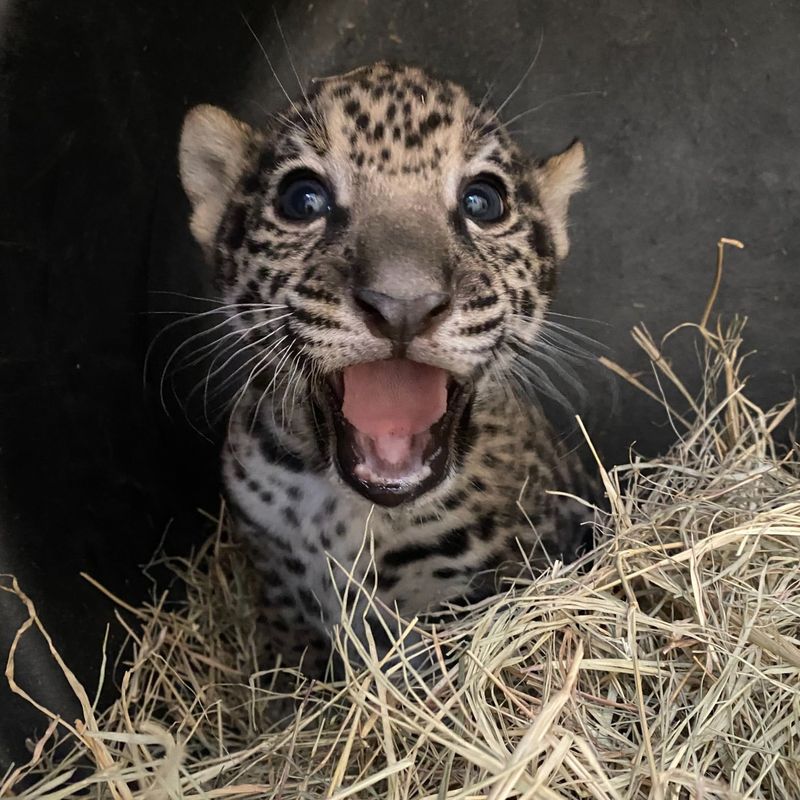
Jaguars are an embodiment of resilience and adaptability, traits that have allowed them to survive and thrive in diverse environments across the Americas. This adaptability is evident in their ability to inhabit varied ecosystems, from rainforests and grasslands to swamps and scrublands. Their dietary flexibility, allowing them to hunt a wide range of prey, is another testament to their resilience.
Jaguars have evolved various physical and behavioral adaptations to meet the challenges of their environments, such as powerful jaws for cracking turtle shells and camouflage for stealth hunting. However, their adaptability is being tested by rapid environmental changes and human encroachment. Despite these challenges, jaguars continue to demonstrate remarkable resilience, adapting their behaviors and ranges in response to new circumstances.
Conservation initiatives that support their adaptability, such as creating wildlife corridors and protecting diverse habitats, are essential for their continued survival. The story of the jaguar is one of enduring strength and adaptability, serving as an inspiration for conservation efforts worldwide.
By preserving their habitats and ensuring their safety, we honor their legacy and secure their place in the natural world.

